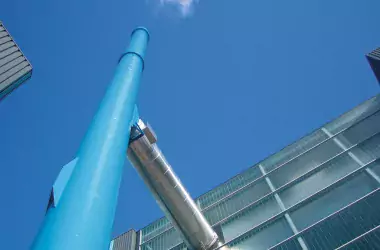Dry process
At Lhoist we offer a full range of sorbents for the different types of dry processes. Their benefits include:
- superior gas removal performance
- less sorbent consumption
- reduced residue generation
Dry processes are also suitable for removing micro-pollutants. The main types of micro-pollutants to be removed are mercury (Hg), organic components such as dioxins/furans (PCDD/PCDF), polychlorinated biphenyls (PCBs), polycyclic aromatic hydrocarbons (PAHs) and odours.
The micropolluant sorbent can be injected separately from the calcium hydroxide or in the form of specific blends to simultaneously remove acidic gas components and micro-pollutants. Volatile metals such as selenium and arsenic are captured by chemical reaction with the calcium hydroxide sorbents and do not require additional sorbents. Dry processes in combination with tailor-made, high quality sorbents enable the best performance and minimize residue production and disposal cost.

Dry sorbent injection (DSI)
Dry processing of gaseous effluents involves injecting hydrated lime in the form of a dry powder to neutralize acid gases. The fly ash and salts resulting from the reaction are separated by an electrostatic precipitator or, preferably, by a fabric filter.

Circulating Dry Scrubber (CDS)
CDS technology was first developed for SO2 removal in coal-fired power plants. Today it is also used in flue gas treatment for industrial furnaces and boilers that use biomass, industrial or municipal waste as fuels. The CDS process is able to remove both acidic gas components and micropollutants. It is based on the recirculation of filter residue which consists of sorbent reaction products and fly ash from the filter. CDS units operate exclusively with calcium-based sorbents.

Packed bed absorber (PBA)
This technology is mainly used in the ceramic brick and tile industry for flue gas treatment downstream of tunnel kilns, usually to capture HF, SO3 and HCl from a limited flue-gas flow rate.

Furnace Sorbent Injection (FSI)
In this process dry calcium hydroxide (Ca(OH)2) is injected directly into the furnace at 850-1,050°C, i.e. before any additional FGT installation.

Fluidized Bed Boiler (FBB)
In this process, the fuel particles are suspended in a hot (800-900°C) bed of fluidized solid materials: fuel, sand, ashes, and so on.